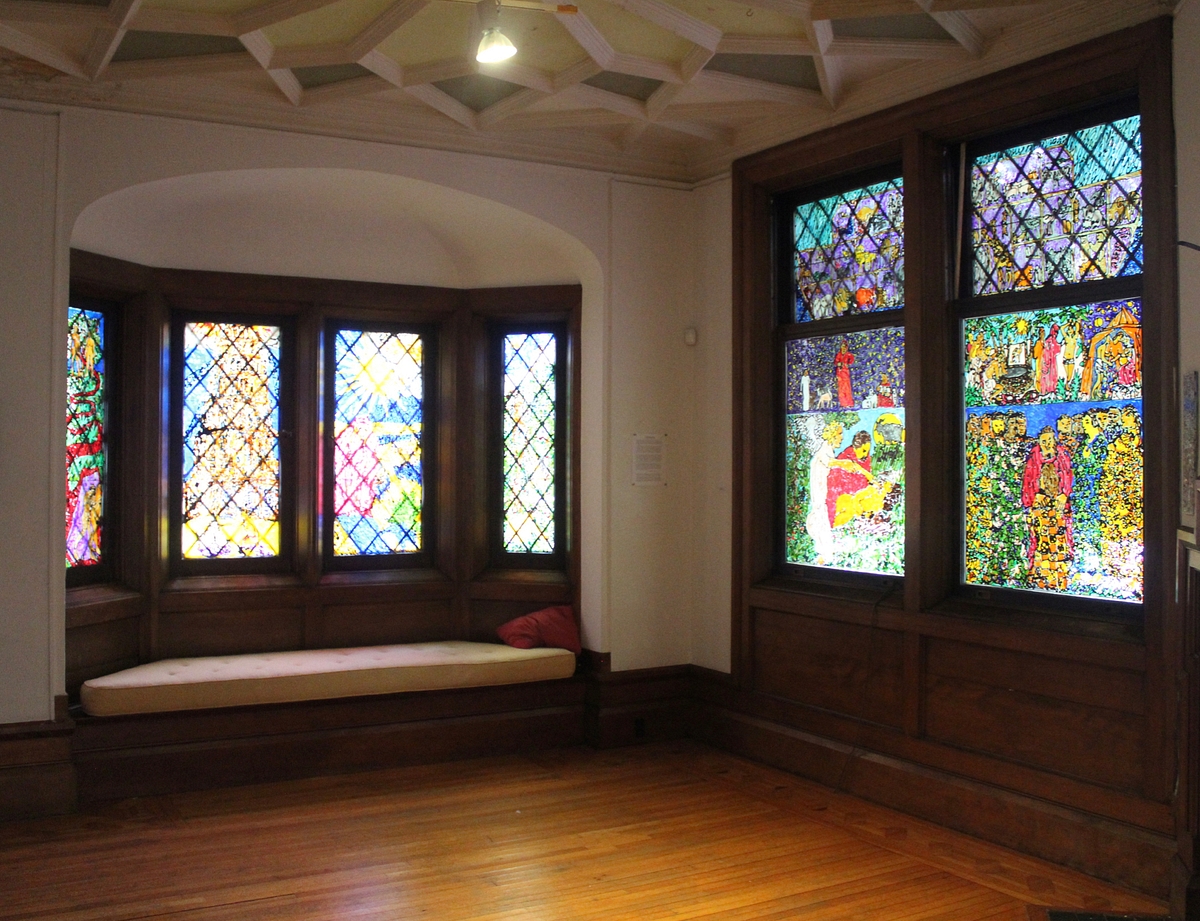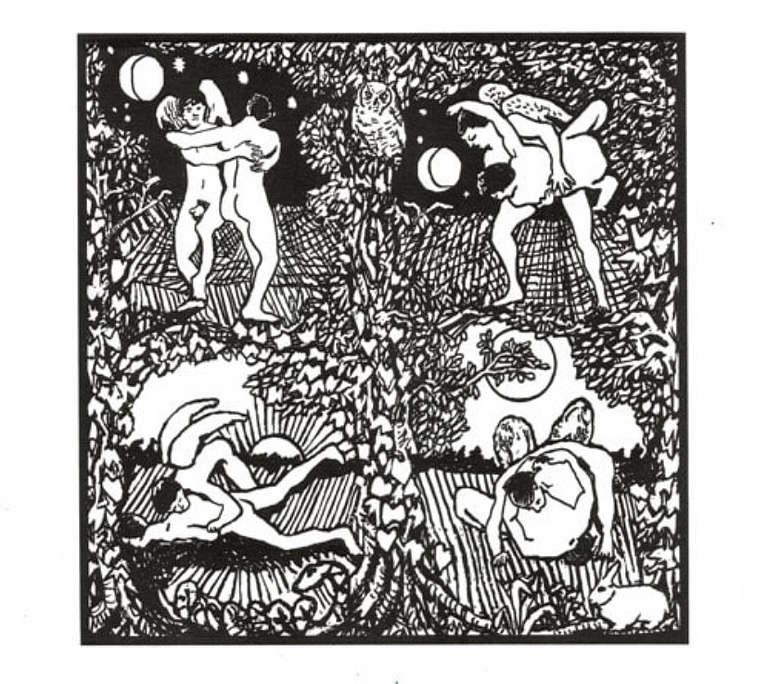
The small first-floor gallery of the Ely Center of Contemporary Art is flooded with multicolored light. It darkens the room overall but has the effect of making the atmosphere in there more vibrant. The gallery becomes a place where you might want to linger, the way people linger around any places that are alive with color, from rooms strung with Christmas lights to meadows full of wildflowers. It’s a place to take a breath and, in keeping with the theme of an exhibit currently staged there, think about new beginnings.
The show is of window paintings and letterpress prints depicting scenes in the book of Genesis, as imagined by artist, art historian, and curator Jonathan Weinberg. “Genesis” is running now at the Ely Center on Trumbull Street through Jan. 5.
The glass paintings and the prints “represent several years of work,” Weinberg writes in an illuminating accompanying statement. “Undoubtedly, they are a response to the traumatic quality of our recent politics, COVID, and being hunkered down with a small circle of friends and family. But also, they are influenced by my work as the curator of the Maurice Sendak Foundation, and the opportunity it has given me to spend so much time with Sendak’s extraordinary art, as well as the prints by the artists he collected, like William Blake and Félix Vallotton.”
Weinberg came upon his art by experimenting with Plaid Gallery Glass, a substance intended to emulate stained glass. “My first paintings were installed in the windows of my house. Inspired by William Blake, I chose to represent Jacob’s Ladder, from Genesis, because its theme of transcendence always has seemed to me to resonate with the artist’s task of taking mundane materials and transforming them into something wonderful. I paired that image with the building of Noah’s Ark, a story of salvation and hope amidst the most traumatic of times. During the COVID crisis, when I was stuck at home, I began to make prints, and I turned back to these themes by re-reading Genesis and finding key stories that I could turn into pictures.”
Weinberg created the images first on an iPad, reworked them in Photoshop, and digitally transferred to the clear polymer. The windows are “full of allusions to famous works of art,” he writes, “ranging from Masaccio to Blake, Picasso to David, Homer to Sendak. He delights in “using such an unexpected and inexpensive medium to create a dramatic, even spiritual effect. This for me was the essence of Jacob’s dream, how in a completely banal place, resting on a hard stone, he fell asleep and dreamt of angels climbing to heaven, and God’s grace.”

Jonathan Weinberg
The Deluge.
Weinberg’s deeply humane and humanistic take on the story of Genesis is on ample display from the letterpress pieces also on display in the same gallery. There is the fact that he devotes a full piece in the story of Noah’s flood to a group of people who didn’t make it onto the Ark, who were left behind to suffer the consequences. We are told that they were punished for their wickedness, but that’s not what Weinberg depicts; he shows their confusion and their fear, perhaps even their desire to repent, even as they know it’s too late.

Jonathan Weinberg
Jacob Wrestling with the Angel.
Similarly, Weinberg’s depiction of Jacob wrestling with the angel conveys the rough-and-tumble physicality of it — the “wrestling” in the story wasn’t a metaphor — showing Weinberg’s gift for showing complicated kinetic movement with just a few lines. It’s also evident why Weinberg may have found himself a curator of Maurice Sendak’s work. There’s a similar sense of eerie play afoot as one finds in the celebrated children’s author’s best work.

The windows, then, add another layer of meaning to Weinberg’s approach to the scriptural story. Most of us are, of course, used to seeing stained glass mostly in places of worship. In those places, the stories are given overtly, perhaps by definition, reverential treatment. The Ely Center of Contemporary Art is a secular space, and almost more a home than a gallery. Weinberg’s treatment of his subjects in the stained glass mirrors his treatment of them in his letterpress images. Weinberg is right that rendering his images in stained glass creates “a dramatic, even spiritual effect.” But it moves in the other direction, too. His approach humanizes the stories, makes them more relatable. He brings them down to earth.
“Jonathan Weinberg: Genesis” runs at the Ely Center of Contemporary Art, 51 Trumbull St., through Jan. 5. Visit ECOCA’s website for hours and more information.